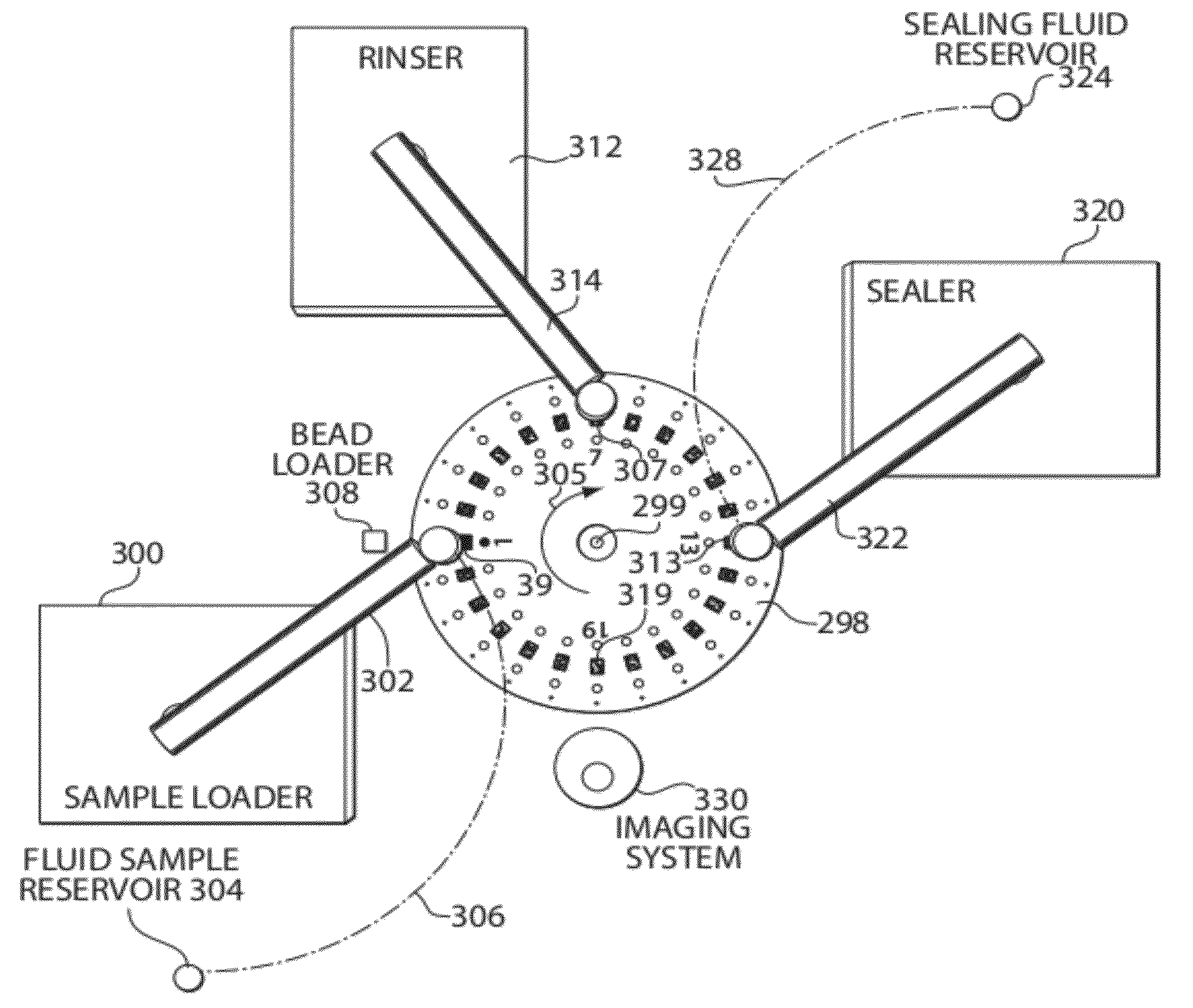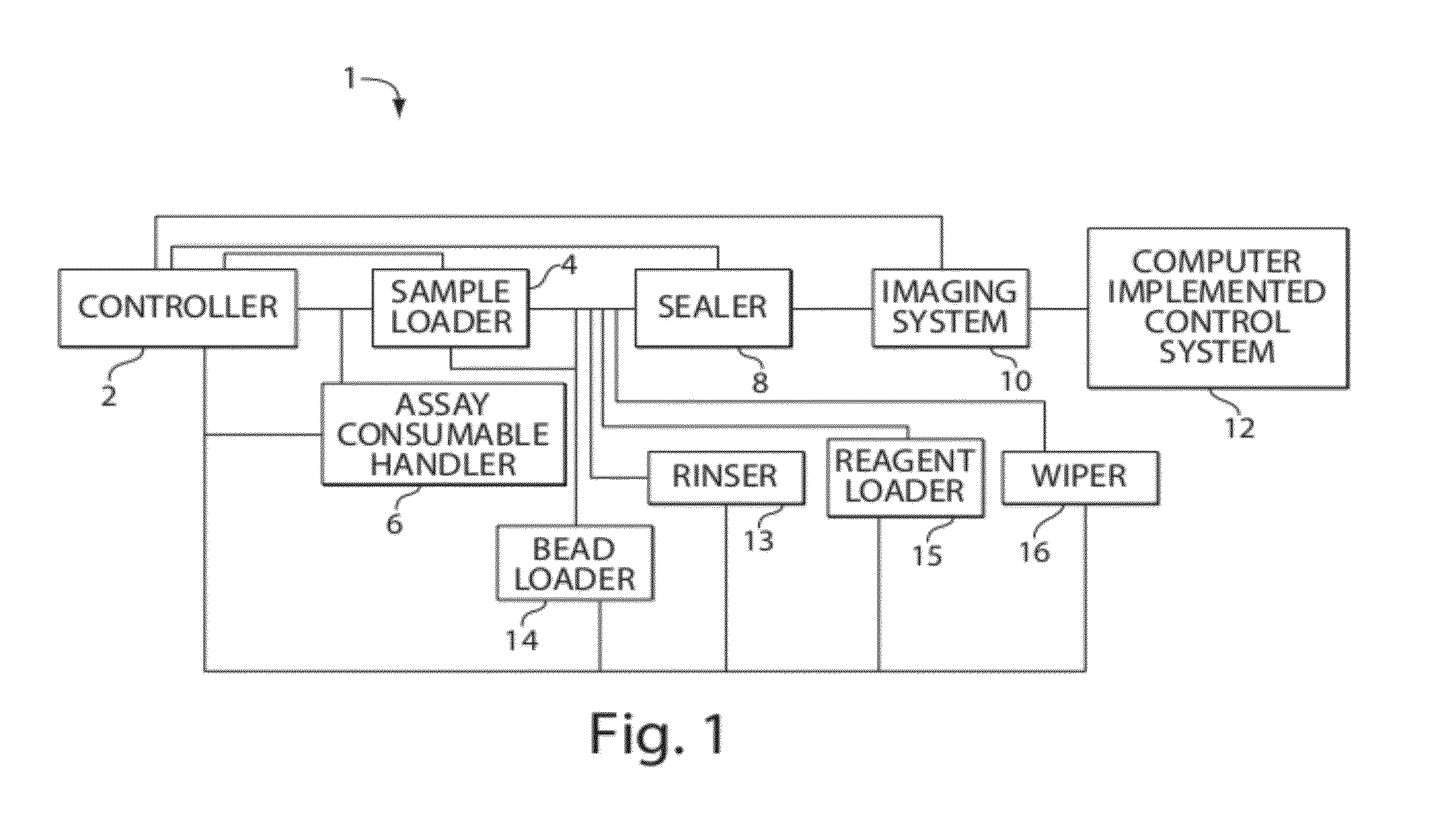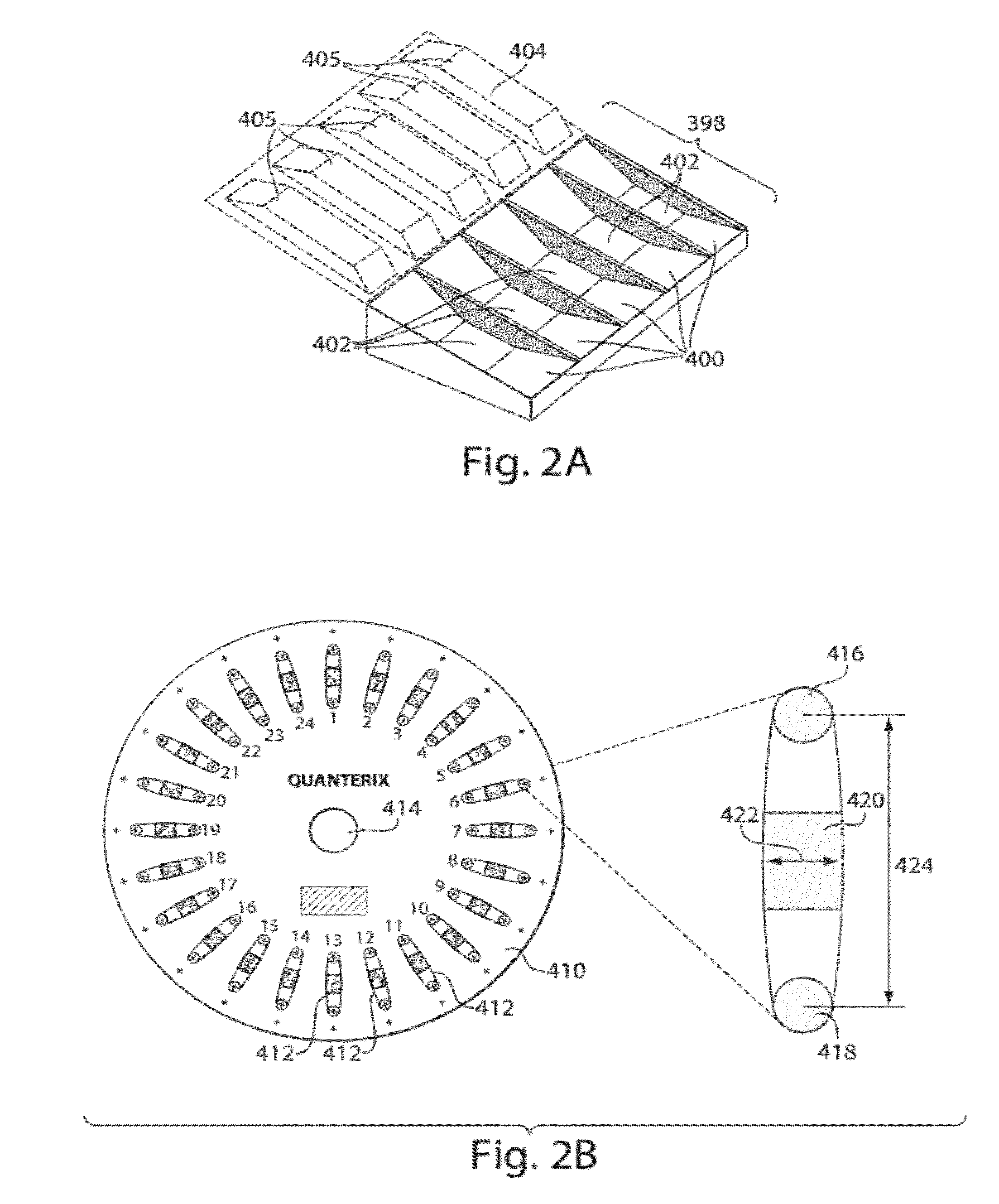Systems, devices, and methods for ultra-sensitive detection of molecules or particles
a technology for detection systems and detection methods, applied in the field of systems, devices, and methods for ultra-sensitive detection of molecules or particles, can solve the problems of limiting the sensitivity of most detection techniques and the dynamic range, many known methods and techniques are further plagued by problems such as non-specific binding, and increasing the background signal
- Summary
- Abstract
- Description
- Claims
- Application Information
AI Technical Summary
Benefits of technology
Problems solved by technology
Method used
Image
Examples
example 1
[0195]The following example describes quantitative measurement of enzyme molecules in an array consumable sealed with an elastomeric film using a sealer comprising a roller configuration
[0196]The assay consumable used in this example was obtained from Edge Embossing (Medford, MA) and was a COC chip wherein the wells were made using self-embossing techniques. The assay consumable comprised an array of five hundred thousand 50-femtoliter wells. The array consumable was placed on as array consumable handler. 10 μl of an enzyme (SβG) at 8 pM were mixed with 10 μl aqueous fluorogenic substrate (RGP) on top of the array of wells, resulting in a final enzyme concentration of 4 pM. The mixture was allowed to fill the array of wells. An elastomeric film, namely a PDMS gasket, was placed on the surface of the array consumable. The sealer moved a roller assembly laterally across PDMS gasket in contact with the array consumable surface to seal the array of wells. During the sealing process, the...
example 2
[0198]The following example describes assay bead loading, bead removal, and sealing with a sealing liquid using an open channel assay consumable.
[0199]The assay consumable used in this example was obtained from Edge Embossing (Medford, MA) and was a COC chip wherein the wells were made using self-embossing techniques. The assay consumable comprised an array of five hundred thousand 50-femtoliter wells. The assay consumable was placed on an assay consumable holder in an orbital shaker with a magnet located directly underneath the array of wells. Assay beads were prepared by capturing prostate specific antigen (PSA) at 10 pg / ml followed by labeling with a biotinylated detection antibody and an enzyme (SβG). 50 μl of assay beads were applied on the surface of the array of wells using a liquid injector. The assay beads were allowed to fall into the wells when a relative motion was created following an orbital track between the assay consumable and the magnet at 100 rpm for 5 minutes. Ex...
example 3
[0201]The following examples describes use of a system comprising a bead loader, a wiper, and a sealer using an assay consumable comprising a plurality assay sites in a closed channel.
[0202]In this example, a molded assay consumable was used having an array of five hundred thousand 50-femtoliter wells with a molded lid thermally bonded to the chip containing the array, together forming a 500-um (micrometer) deep closed channel having two access holes (e.g., an inlet and an outlet), (e.g., similar to the configuration shown in FIG. 8A). The assay consumable was placed on an assay consumable handler stage with a magnet located directly underneath the array of wells (e.g., part of the bead loader). Assay beads were prepared by capturing prostate specific antigen (PSA) at 0 pg / ml, 10 pg / ml and 20 pg / ml followed by labeling with a biotinylated detection antibody and an enzyme (SβG). 50 ul (microliters) of assay beads (in the sample fluid) were loaded into the microchannel through one of ...
PUM
 Login to View More
Login to View More Abstract
Description
Claims
Application Information
 Login to View More
Login to View More - R&D
- Intellectual Property
- Life Sciences
- Materials
- Tech Scout
- Unparalleled Data Quality
- Higher Quality Content
- 60% Fewer Hallucinations
Browse by: Latest US Patents, China's latest patents, Technical Efficacy Thesaurus, Application Domain, Technology Topic, Popular Technical Reports.
© 2025 PatSnap. All rights reserved.Legal|Privacy policy|Modern Slavery Act Transparency Statement|Sitemap|About US| Contact US: help@patsnap.com



